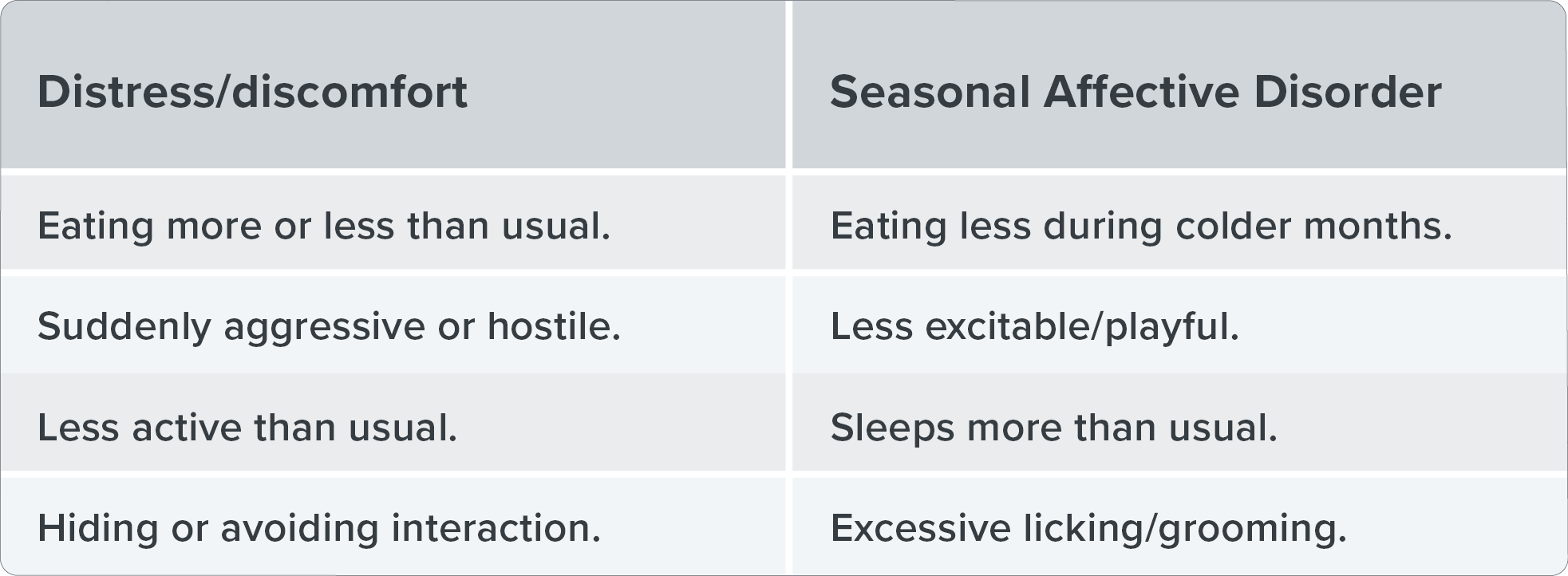Pets get S.A.D. too. How to recognise and assist a pet that is Sluggish, Anxious, or Distressed.
As the temperatures drop and the daylight hours become much shorter, some of us might experience Seasonal Affective Disorder, which is characterized by feeling depressed, tired, and isolated. Since we share our homes and lifestyles with our furry friends, it’s likely that their moods are also affected by the seasonal changes.
Fatigue
Both humans and dogs produce a hormone called melatonin, which helps regulate sleep. When it gets dark, our bodies make more melatonin, which makes us feel sleepy. Scientists think that producing too much melatonin because of the shorter days can cause fatigue and a lack of motivation. Since dogs also produce melatonin, they might be at risk of feeling increasingly sluggish too. It is also the decrease in exposure to sunshine that makes it difficult to maintain energy levels. Your fur baby could be struggling with their appetite or sleep patterns due to lower temperatures and less vitamin D.
Distressed or moody?
Changes in behaviour can indicate that your pet is experiencing distress or discomfort. However, it can sometimes be difficult to tell the difference between distress and whether they are feeling a bit moody due to the seasons changing. Here are a few behaviours to look out for:

Keeping your pet healthy and happy during winter
Whether your pet is feeling bored and isolated, mimicking your mood, or just has the blues, there are steps you can take to help lift their spirits and keep them healthy:
- Go outdoors:
Braving the cold is often easier for our pets than it is for us. Follow their example by getting both of you moving – outside! Sunlight, socialisation, and staying fit are the ways to go about curing the grumpies.
- Keep them engaged indoors:
Take the time to interact with your pet every day, by providing engaging activities indoors. Pet toys and games are getting more evolved for indoor use and could help to keep them stimulated.
- Improve indoor lighting:
Open those curtains and let the natural light in. It would also help to move your pet’s bed to a sun-filled room or a window. An alternative would be to instal full spectrum lighting if there is a lack of natural light.
- Adjust their diet:
Be sure to check that your pet’s diet consists of sufficient nutrients. Probiotics, essential fatty acids, and vitamins could radically improve their mood and stamina.
When to call your vet
It’s advisable to always contact your vet if you’re concerned about any changes in your pet's behaviour. There are many reasons why your fur-baby might be acting strangely, and it’s crucial to identify the root cause and rule out any serious issues.
Diagnosing SAD in pets can be difficult since they can’t communicate their emotions like humans. However, drastic behavioural changes need to be acknowledged and addressed, to ensure their well-being and safety.



